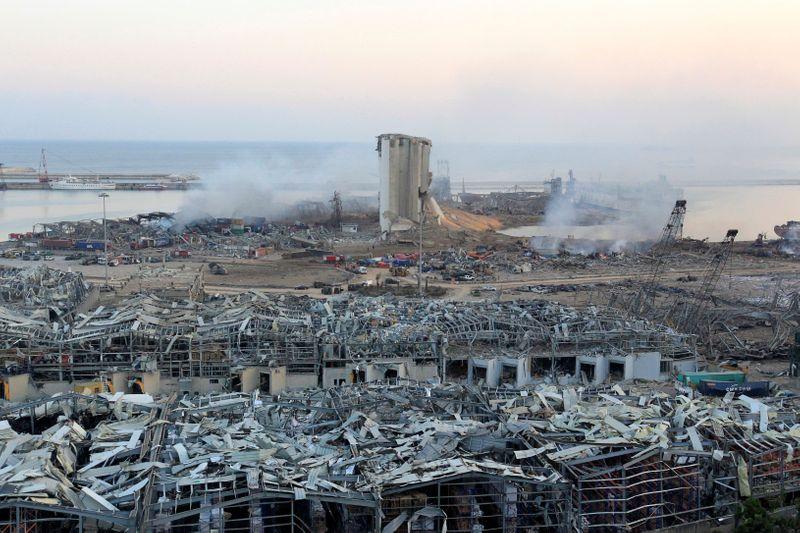The Reuters team in Beirut, Lebanon, faced enormous personal and professional challenges this week following an explosion that left more than 145 dead, over 5,000 injured and an estimated 300,000 homeless.
A team of journalists experienced their homes and possessions being destroyed and being hit by flying debris as they were caught up in the gigantic blast, all while being first and fast delivering coverage of the explosion to Reuters customers.
Beirut Senior Producer Ayat Basma was on a day off when she was alerted to a fire in Beirut’s port area and immediately started filming the plume of smoke rising into the sky visible from the window of her apartment.
A few minutes later, some 2,750 tonnes of the highly flammable ammonium nitrate stored at the port exploded with a violence rarely seen in peacetime. So powerful was the shockwave that Basma was knocked over, sustaining a cut to her head.
“I was lying on the ground, and all I could hear was the sirens of the car alarms,” Basma says. “Then the adrenaline kicked in.” Barely noticing the blood from her cut head, she rushed into the street to start filming. In some of the more memorable footage to be shot this year, Ayat started recording the scenes of chaos around her. “Everything was down, the neighbours were shouting, the kids were crying. All you could hear was the sound of cars driving on smashed glass,” Basma says.
Reuters producer Yara Abi Nader was leaving the office when the blast came. Dazed and unsure of exactly what had happened, she too began shooting video, sending clips to the regional video desk in Cairo for transmission. “I now realise I was probably in shock,” says Nader. “But I was focused on just one thing: getting my footage out.”
When photographer Mohamed Azakir first reached the Beirut port, he saw a man pinned under a vehicle, covered in a thick film of rubble and blood. At first, Azakir thought the man was dead. But when he opened his eyes and waved his arms asking for help, Azakir called over nearby rescuers. He recorded the rescue in a series of photographs, while also helping rescuers to move the car to free him.
Reuters was also first with live video from the scene of the explosion, thanks to videographer Issam Abdallah, who rushed to the site to provide the first images of the aftermath from the port.
In the backdrop, producer Imad Creidi set up an impromptu Reuters video hub at his home outside Beirut – which still had an internet connection – from where he was able to process on-the-ground footage.
Hundreds of TV channels ran Basma and Nader’s footage, with more than a thousand running Reuters video in the days since the explosion, making the Beirut blast one of the most heavily-used cases of footage in 2020.
To access Reuters coverage, visit Reuters Connect.
[Reuters PR blog post]
Media Contact:
joel.ivory-harte@thomsonreuters.com
